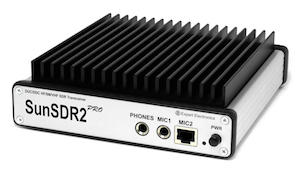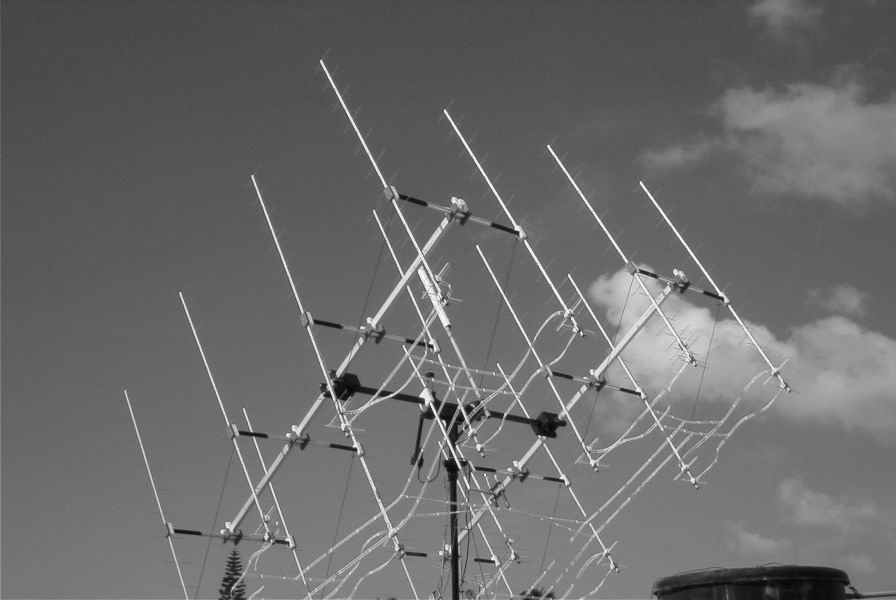EA8FF: No other comes close to SunSDR2 PRO
 Mark EA8FF bought one of the first SunSDR2 PRO HF, 6m and 2m tranceivers from SunSDR.eu. Mark is a demanding operator with a very special interest in low signal DXing, both on HF, VHF and UHF. In his own words, this is Mark’s initial review after using his new SunSDR2 PRO for a few weeks.
Mark EA8FF bought one of the first SunSDR2 PRO HF, 6m and 2m tranceivers from SunSDR.eu. Mark is a demanding operator with a very special interest in low signal DXing, both on HF, VHF and UHF. In his own words, this is Mark’s initial review after using his new SunSDR2 PRO for a few weeks.
I have not being doing any absolute measurements on the SunSDR2 PRO but compared its ability to receive weak signals in general with a few other tranceivers, connecting both receivers to the same antenna trough a good 3 dB splitter and listening to, or decoding the same signal at the same time.
The results were all but one well in favor of the SunSDR2 PRO. In fact, no other receiver ever comes close by on the bands were I have antennas for. I have been specially looking for weak signals close to interference or digged in the noise. Weak beacons, perfectly readable on the SunSDR2 PRO were barely detectable on all other equipment. So all other tranceivers have gone out by now, I wouldn’t switch them on anymore anyway. 100 MHz broadcast sounds distorted, but thats probably a software issue and I don’t need broadcast reception.
I am building a 23 cm EME station and want to use K1JT’s MAP65 software. This allows you to receive and decode all JT65 signals simultaneously in a 90 kHz part of the band. To get familiar with the software I implemented MAP65 in the ExpertSDR2 software as CWSkimmer, using the I/Q output over Virtual Audio Cable. At first I couldn’t get enough signal level to MAP65, but discovered that in the last versions of Virtual Audio Cable you can enable volume control to boost the signal from the SunSDR2 PRO.
The reception of JT65 signals on 14.076 is exeptional: I see people exchanging reports down to -21 but I get many perfect decodes down to -27 and even far below, all this without Deep Search.
Frequency stability and accuracy is excellent, I connected my GPSDO at 10 MHz and found a difference of 20 Hz on 144 MHz, and the internal frequency standard walks away from this no more than 10 Hz a day. So no need for external frequency references unless you want to have a very precise frequency using WSPR.
On SSB transmit the sound is crystal clear, you can make lot’s of adjustments to adapt your voice to the transmitter. I connected a bug and tried some CW keying. Super keying, perfect vox keying , clean signal.
I mounted a 12 x 12 cm 12 volt computer blower on top of the SunSDR2 PRO with a 100 Ohm resistor in series. This lowers the temperature in this warm climate down to 35 C without extra noise in the shack. A nice thing about the SunSDR2 PRO unlike some other SDR receivers is that you don’t see birdies when you disconnect the antenna.
The only connection you need to the computer is a single network cable, that’s all, sound information is then exchanged with the PC over Virtual Audio Cables. T/R switching is done by VSP Manager. This prevents ground loops and RFI problems, saves you a modem, and works seamlessly.
I like the concept of the SunSDR2 PRO tranceiver: Small size, enough power to drive modern solid state PA’s, good quality connectors. The only tranceiver you need to everything!
More information on the SunSDR2 PRO high performance HF, 6m and 2m SDR transceiver is found here.

